WITH UNSUNG LEADERS -Stories of behind-the-scenes leaders who take on challenges for a better future-
“Co-creation” is indispensable for accelerating the development of next-generation semiconductor packages.
The Packaging Solution Center connects makers of semiconductor manufacturing equipment and materials in Japan.
January 1, 2023
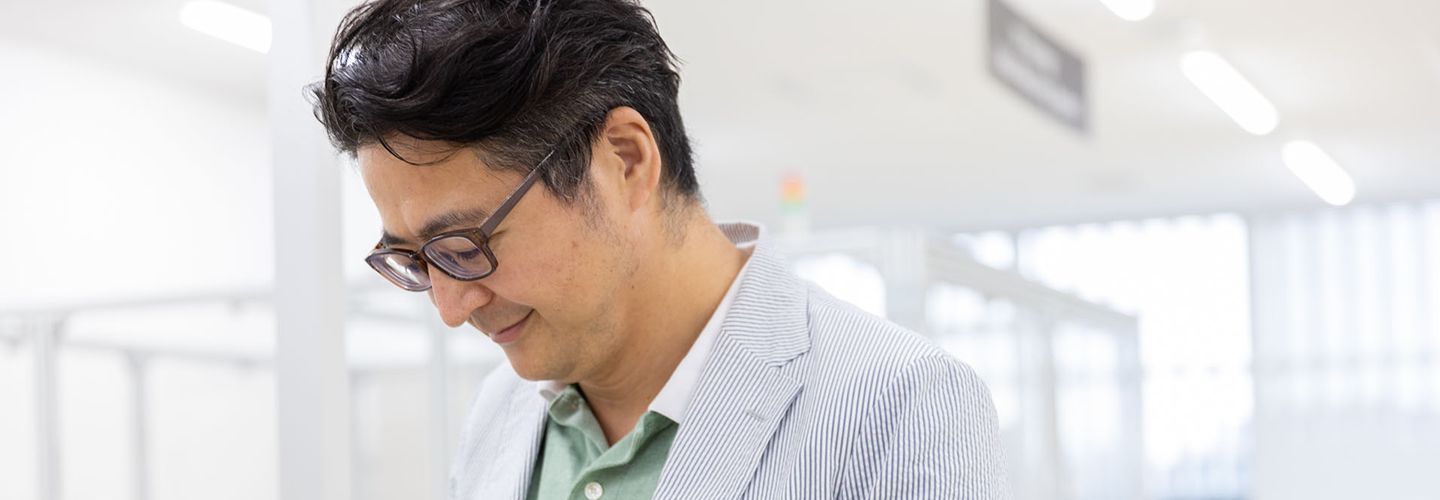
Semiconductors have come to play increasingly important roles in recent years, prompted by the development of digital technologies, such as 5G, metaverse, and artificial intelligence. Although Japan’s chip industry is said to be on the decline, Japanese makers of semiconductor manufacturing equipment and materials continue to hold substantial market shares in the world. As a semiconductor material maker, Resonac has established the Packaging Solution Center to promote open innovation through co-creation in the industry. Resonac has a broad product lineup for the back-end process of semiconductor manufacturing, where the chips are cut and assembled. How does the company plan to lead the development of next-generation semiconductor packaging? We asked Hidenori Abe, general manager of the Electronics Business Headquarters R&D Center.
The Packaging Solution Center promotes open innovation through co-creation.
Japan’s semiconductor industry is said to have declined over the past 30 years. What is the latest situation of semiconductor material makers?
Abe: Indeed, the number of semiconductor manufacturers has decreased in Japan since the 1990s, but Japanese makers of semiconductor manufacturing equipment or materials still hold major global market shares. Resonac also has a broad range of top-ranked products in the world market, and the sales value of its packaging materials is the highest in the world.
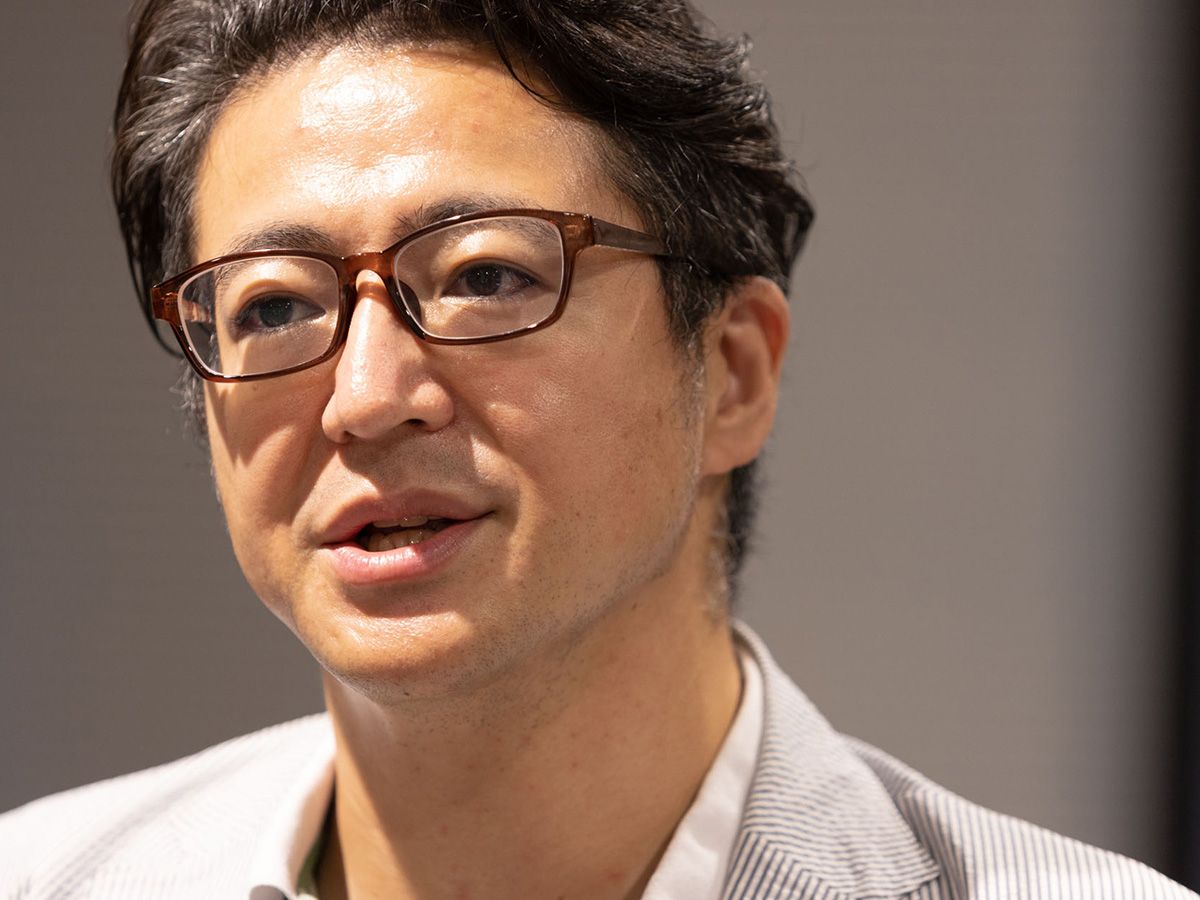
Hidenori Abe, General Manager of the Electronics Business Headquarters R&D Center
What sort of facility is the Packaging Solution Center?
Abe: The Center was established in Kawasaki City in 2019 with the aim of early realization of next-generation semiconductor packages. With the Center’s latest semiconductor packaging equipment, we can replicate the entire manufacturing process in the integrated trial-evaluation line for advanced semiconductor packaging. We can also provide total solutions, such as proposals optimizing the combinations of packaging materials in multiple processes or ideas on how to use the materials, including process conditions.
This is possible because Resonac provides semiconductor materials for the front-end process, back-end process, and substrates. Few private companies in the world have systems covering such a wide range of processes.
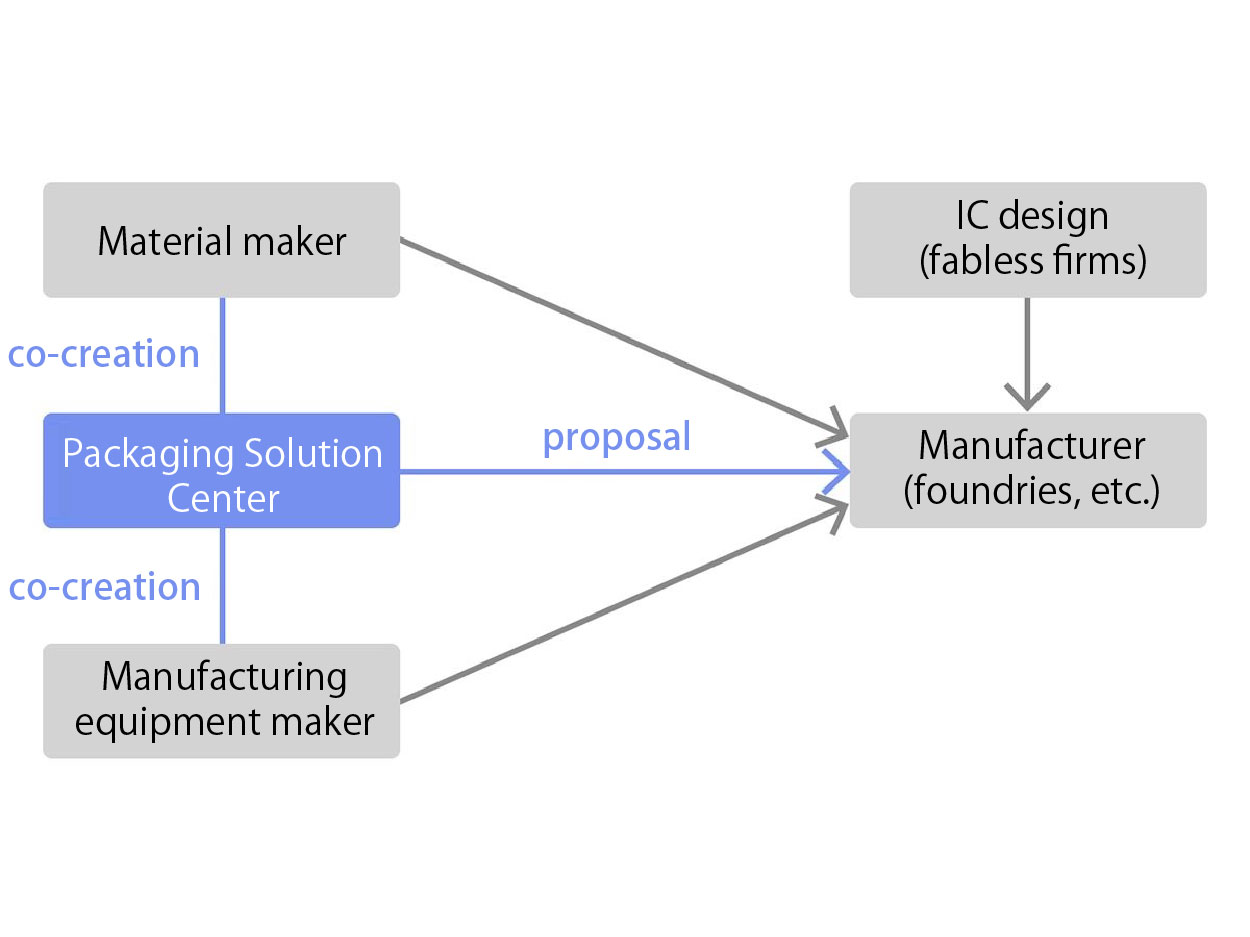
Structure of the semiconductor industry and position of the Packaging Solution Center
What was the background of establishing the Packaging Solution Center?
Abe: The main reason for establishing the facility was the strongly felt need for “co-creation” in developing next-generation semiconductor packages. We have to respond to the demand for smaller, thinner packages. We also face the growing need to process vast amounts of data at high speeds as the markets for autonomous vehicles, AI, metaverse, and other new technologies expand. Reducing electricity consumption is crucial as well to achieve the SDGs.
Under these circumstances, efforts to improve performance mainly by making devices smaller in the front-end process, with all the functions packed into one chip, are reaching their limits, both physically and economically. This is why the industry has been shifting toward improving performance through advanced packaging and mounting technologies in the back-end process. I think the recent increase in the importance of back-end processes in semiconductor manufacturing is a turning point for Japanese semiconductor manufacturing equipment and material makers.
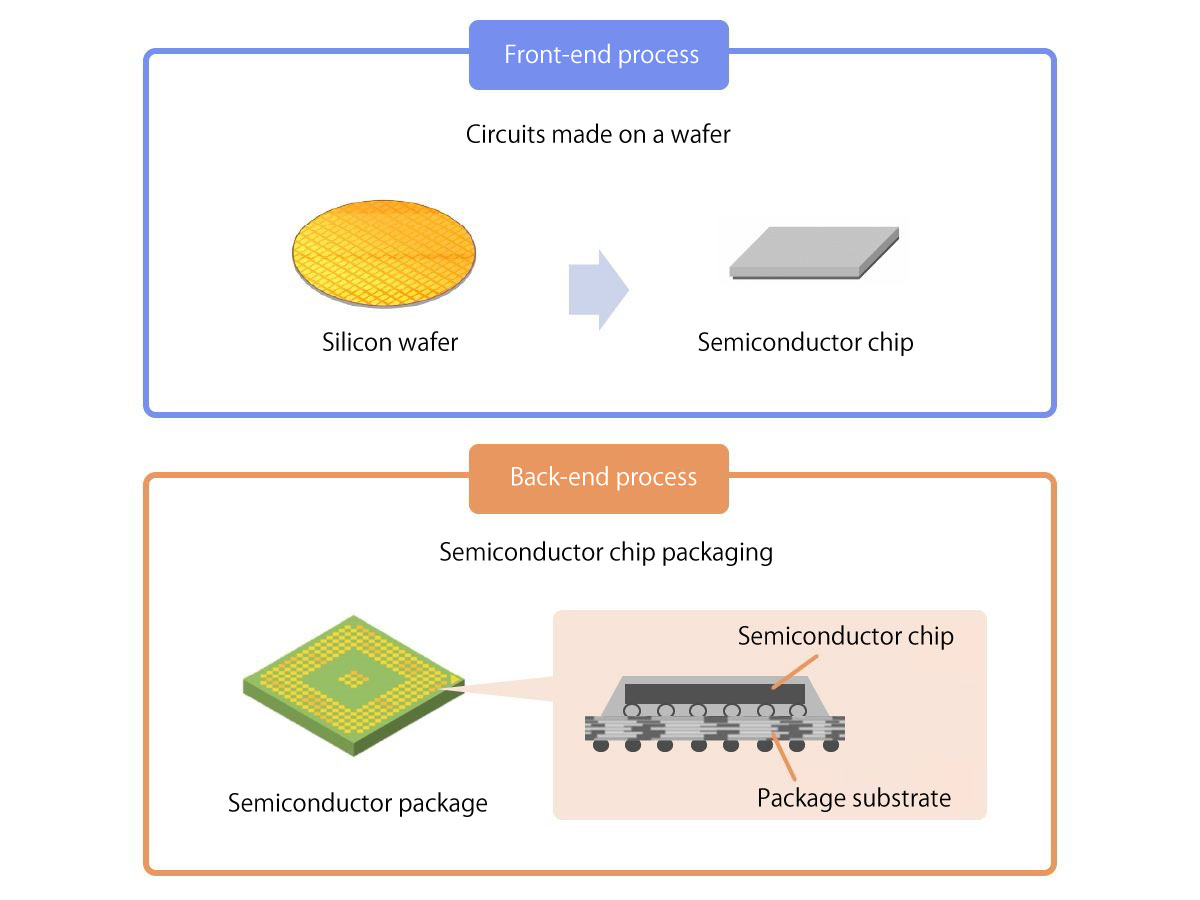
Semiconductor manufacturing process
Abe: But if individual makers continue to conduct technological evaluations by themselves, it will be hard to accelerate development or to address issues quickly. The industry will not be able to respond quickly to global needs. This is why we are aiming to strengthen horizontal collaboration and contribute to the early realization of leading-edge packaging technology through co-creation that promotes open innovation.
As a matter of fact, such moves are not new. Since around 2014, we have been pursuing the policy to promote open innovation in semiconductor packaging materials and processes through co-creation with our customers, equipment manufacturers, and material makers.
Introducing the latest equipment to replicate the entire flow of semiconductor manufacturing through the back-end process
Tell us about the strengths of the Packaging Solution Center. What can the facility do exactly?
Abe: The facility’s greatest strength is the latest semiconductor packaging equipment that can replicate the entire manufacturing process in the integrated trial-evaluation line. The Center focuses on the “reliability evaluation” after completing the back-end packaging process. Specifically, we have devices to test the temperature, humidity, voltage, and current—elements that can cause deterioration in semiconductor devices—under given conditions. We also have a system to analyze the cross section of samples to determine the cause of failures.
As extremely intricate work is now required in the back-end process, it is important to establish a flawless environment for improving the technical level. For example, the facility has a class-100 cleanroom, a level that was unnecessary in the back-end process. But we decided to install the system, considering the Center’s aim to realize next-generation semiconductor packages at an early stage.
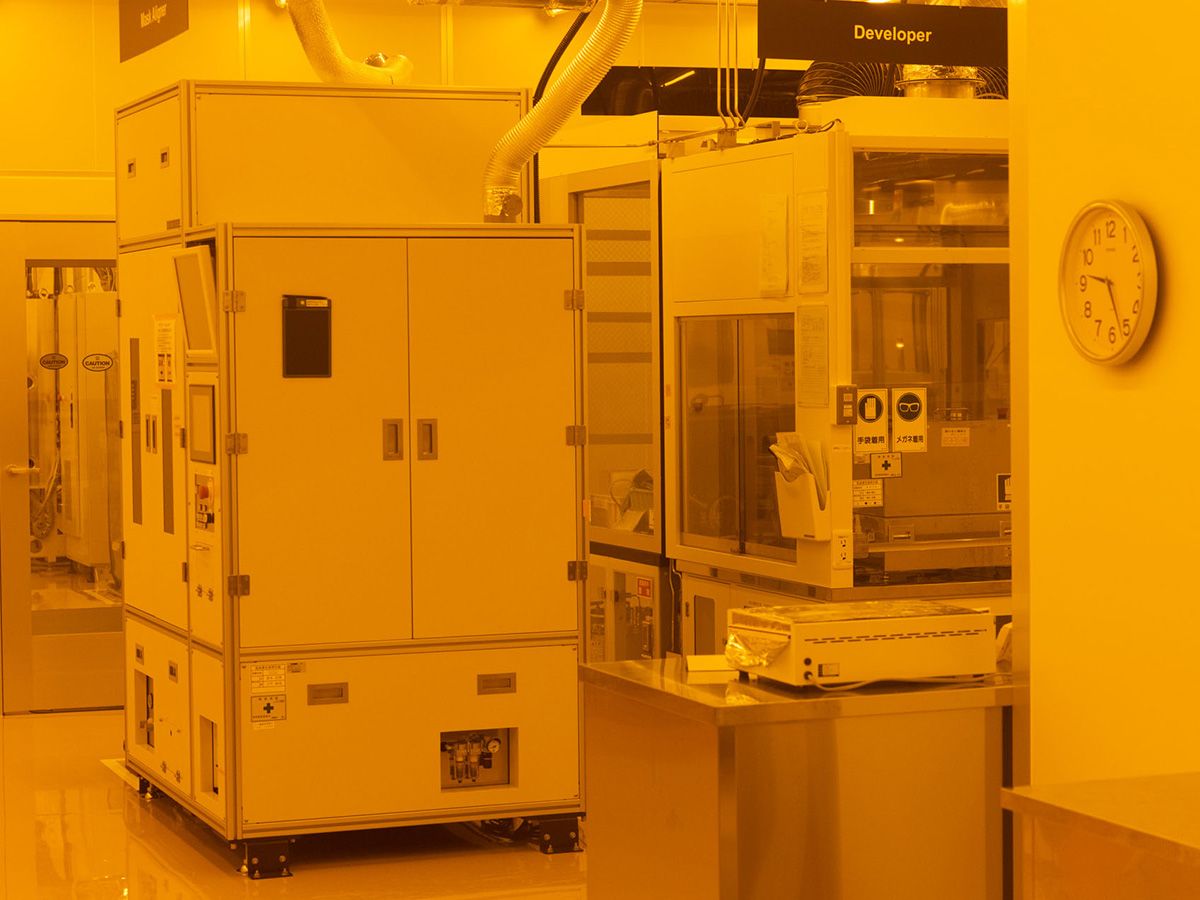
The Packaging Solution Center has class-100 and class-1,000 cleanrooms. A class-100 cleanroom is 10,000 times cleaner than a normal facility.
Why did the Company choose Kawasaki City as the development base?
Abe: The precursor of the Packaging Solution Center was the Packaging Center (Open Laboratory) located in Tsukuba City, Ibaraki Prefecture. The Packaging Center enabled customers to test and evaluate our semiconductor materials as well as other makers’ materials and devices. The facility contributed to realizing effective semiconductor packages swiftly, and helped accelerate the development of a number of next-generation materials and new processes, reducing the time for new products to obtain certification to one-third of the conventional period.
To promote co-creation further we felt the need for a new site with easy access to the lab, and where we could install new equipment more smoothly. That’s why we relocated the facility to Kawasaki City.
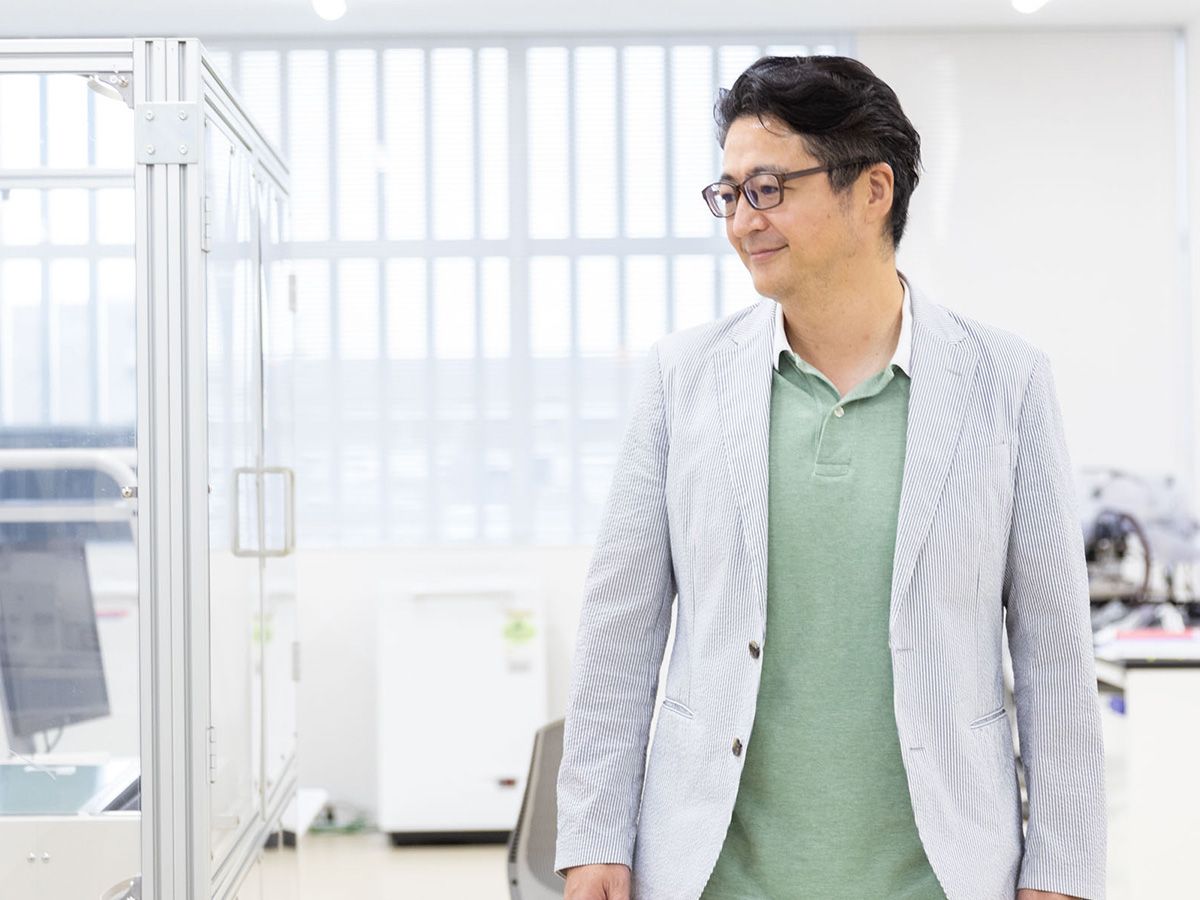
Why did you think “easy access to the lab” and “installing new equipment smoothly” necessary for promoting co-creation?
Abe: Let me start with “easy access to the lab.” The old Packaging Center★ located far from Tsukuba Station was inconvenient, particularly for our overseas customers. The current Packaging Solution Center is located on the third floor of the Advanced Innovative Research and Business Incubation Center, or AIRBIC, a facility established by Kawasaki City for the creation of new industries. Close to Haneda Airport, the location is ideal for collaborating with other Japanese and overseas firms.
Secondly, to introduce new equipment more smoothly, it was crucial to expand the lab and also change the building’s structure. As for AIRBIC, in which the Packaging Solution Center is located, we were involved in its planning and design. We discussed our requirements with Kawasaki City from the concept phase. In the old laboratory, heavy equipment was relegated to the first floor, but by optimizing the building structure, heavy equipment can now be installed on the third floor of the new facility, and the lab space has increased three to fourfold as well. Since other companies also have offices or laboratories in AIRBIC, it is an ideal environment as an open innovation base.
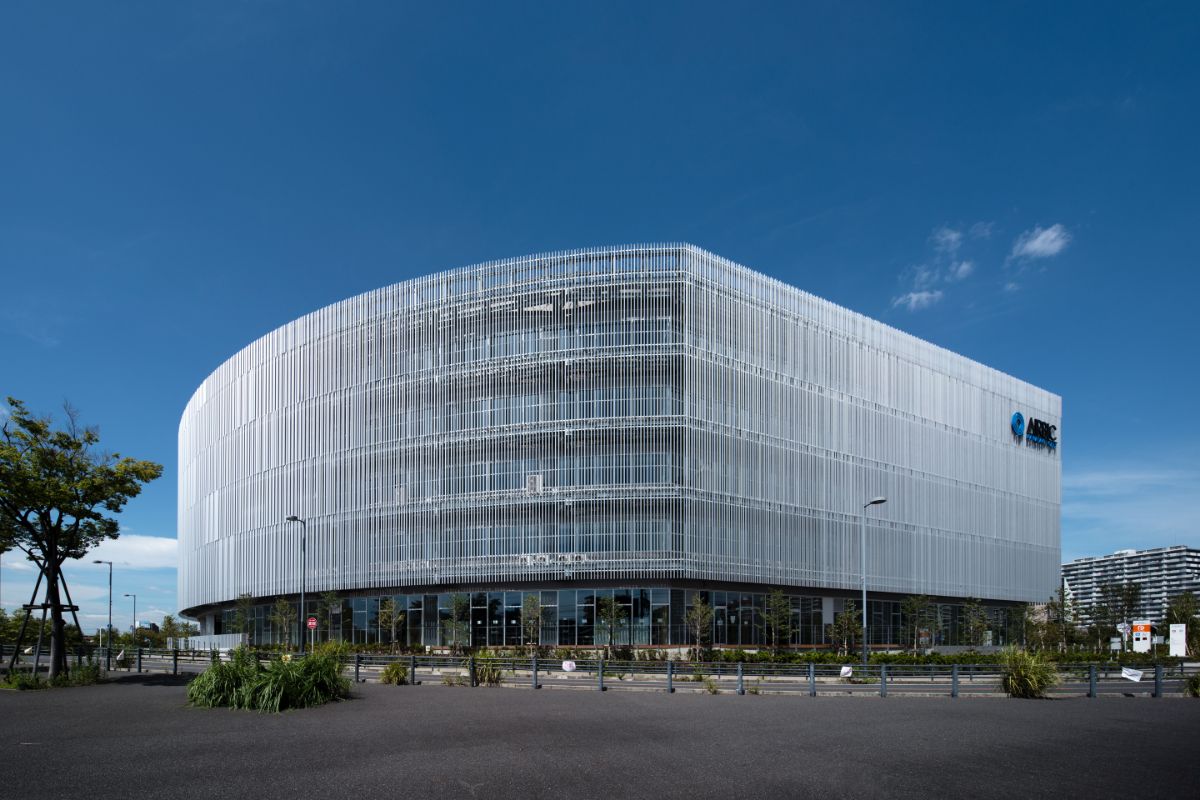
Kawasaki Business Incubation Center - AIRBIC
Leading the industry by taking advantage of the Packaging Solution Center
Chip makers around the world are vying for market dominance. Semiconductors are also becoming strategic products. What industrial trends are you focusing your attention on these days?
Abe: “Chiplet” technology is considered a major turning point. Conventional technology embeds elements like logic and memory in one chip. Using chiplet technology, however, components are made as individual chips and combined like blocks, then mounted on a package substrate and connected electrically. They are designed to work like a single chip. In this way, even chips with different designs, manufacturing methods, or packaging techniques can be connected.
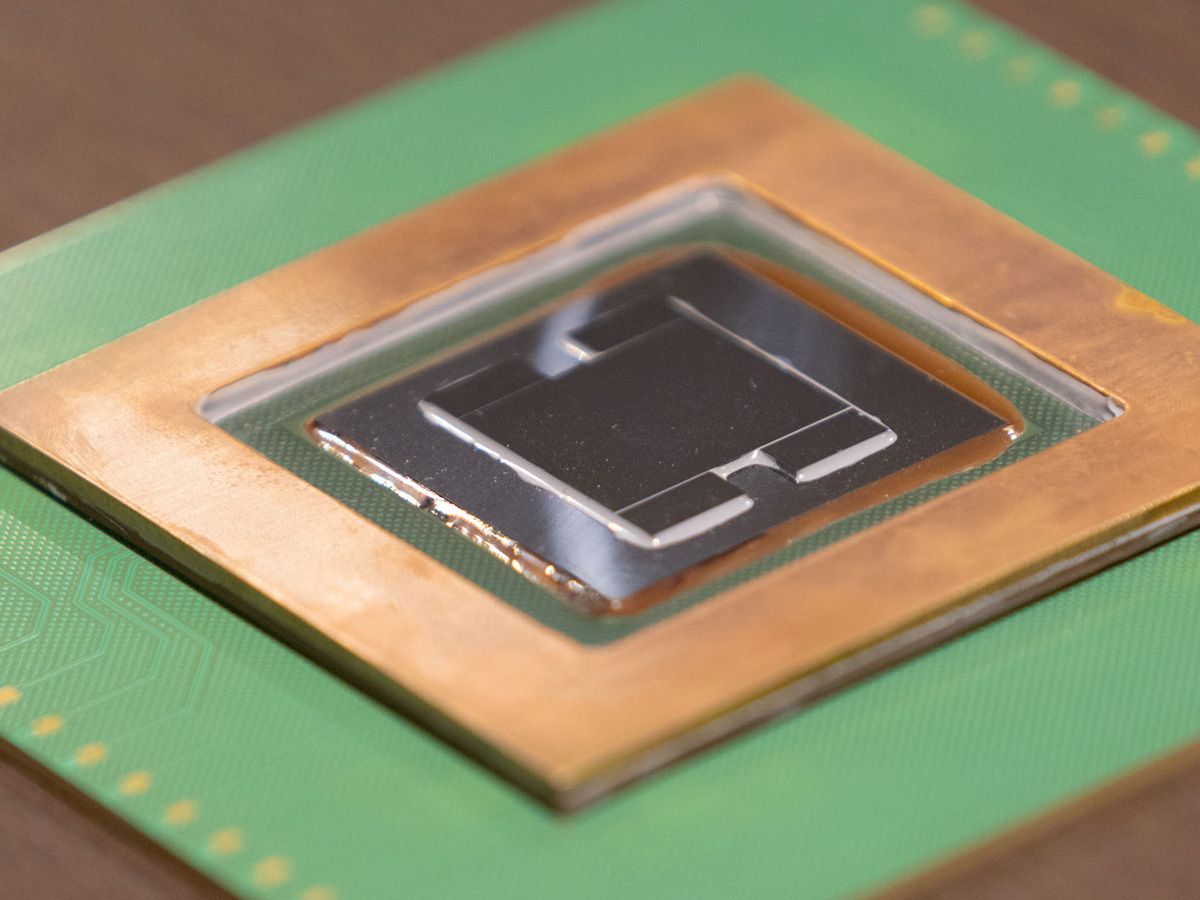
A 2.5D package built at the Packaging Solution Center
Abe: By using chiplets, semiconductor makers can manufacture products with higher performance more quickly, because the lead time can be reduced by combining and electrically connecting multiple components, rather than redesigning the components and developing them into different chips. For example, we can cater to detailed needs, such as quickly building a chip specialized for an AI algorithm in the client’s original software.
As more manufacturers start to use chiplets to improve the performance of individual semiconductor packages, we will inevitably face new problems, such as how to connect the chiplets or secure reliability. We believe the Packaging Solution Center will play a significant role with our accumulated skills and materials, especially in providing an evaluation environment for verifying reliability, which is our strength.
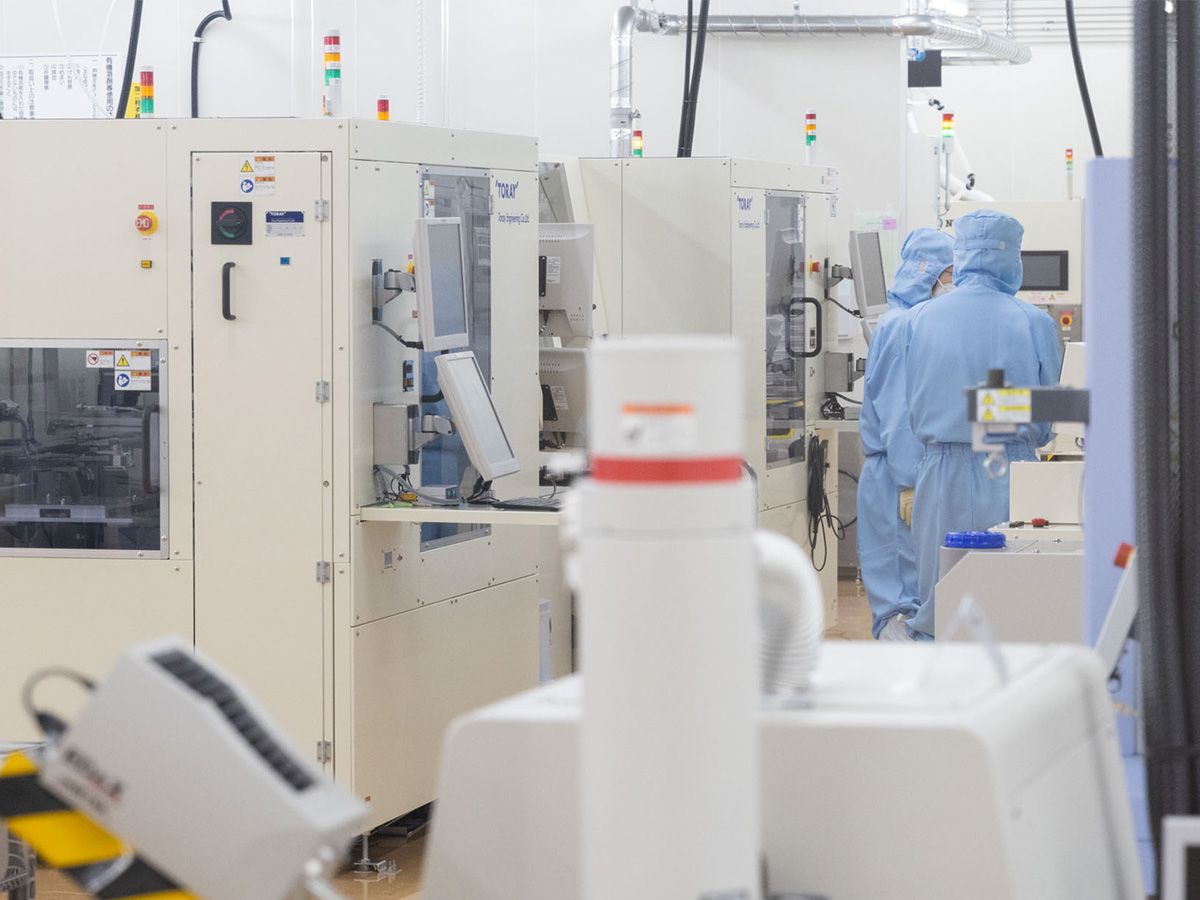
Please outline the future prospects of the Packaging Solution Center.
Abe: As a manufacturer of semiconductor materials, Resonac has to be a reliable business partner rather than simply a supplier. By promoting co-creation with equipment and material makers, we will make constant efforts to thoroughly understand the issues facing our customers who manufacture semiconductors, and propose diverse solutions.
We will utilize the Center to connect supply chains, which have been divided, and expand the network vertically and horizontally, including our competitors. We hope to bring together each company’s skills and provide one Japanese technology to the world. I think it is time for Japan to demonstrate its strength in integral manufacturing, with multiple parties making adjustments to complete high-quality products.
We will use the Packaging Solution Center as a solid foundation to lead the development of next-generation semiconductor packaging.
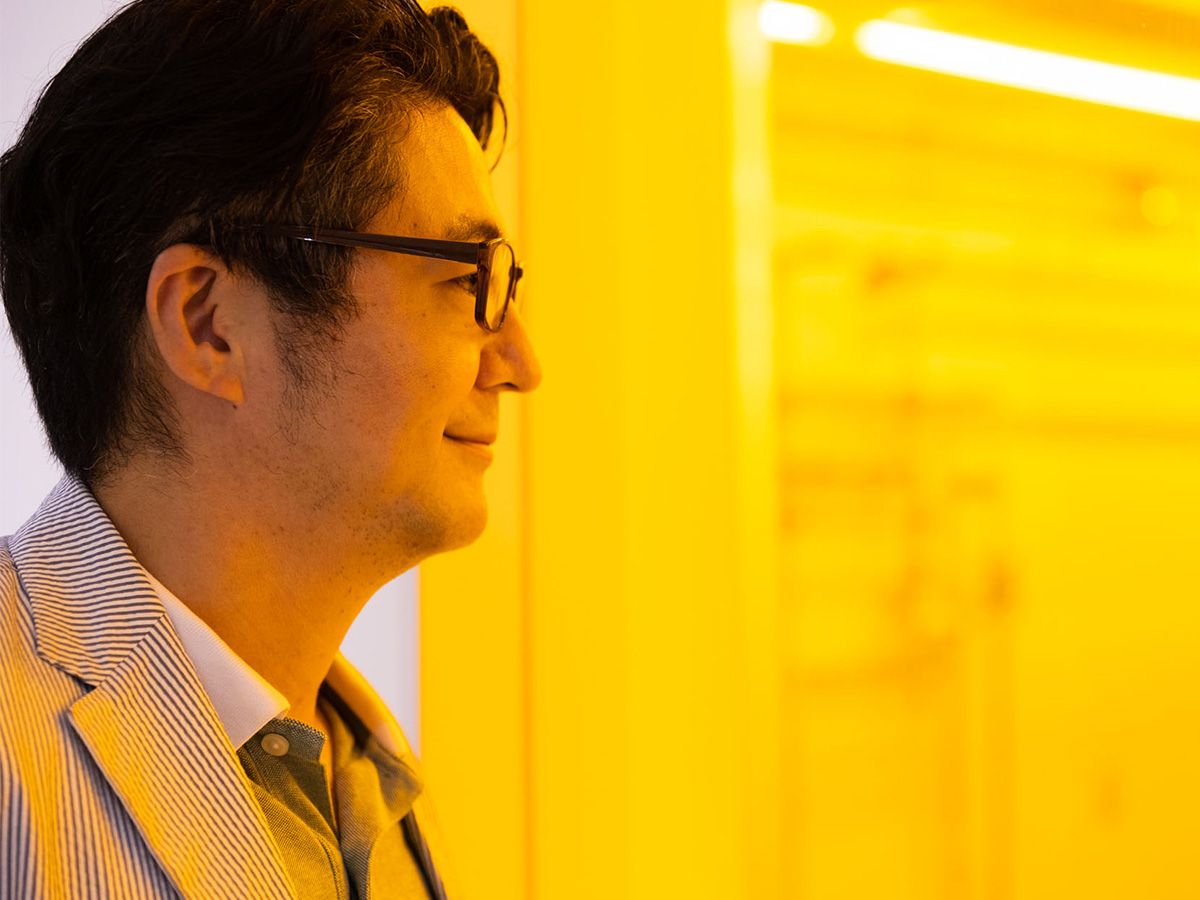
Hidenori Abe
General Manager of the Electronics Business Headquarters R&D Center, Resonac Corporation
After joining Hitachi Chemical Co., Ltd. in 1998, Abe was involved in the development of semiconductor sealing materials. He worked in the U.S. office for seven years and gained experience in technical services while obtaining an executive MBA. He was later involved in the establishment of the Packaging Solution Center and served as corporate marketing manager and the department head of the CMP slurry business. Currently, Abe is focusing his efforts on the development of overall semiconductor materials and related products, while promoting co-creation activities based on the Packaging Solution Center.
